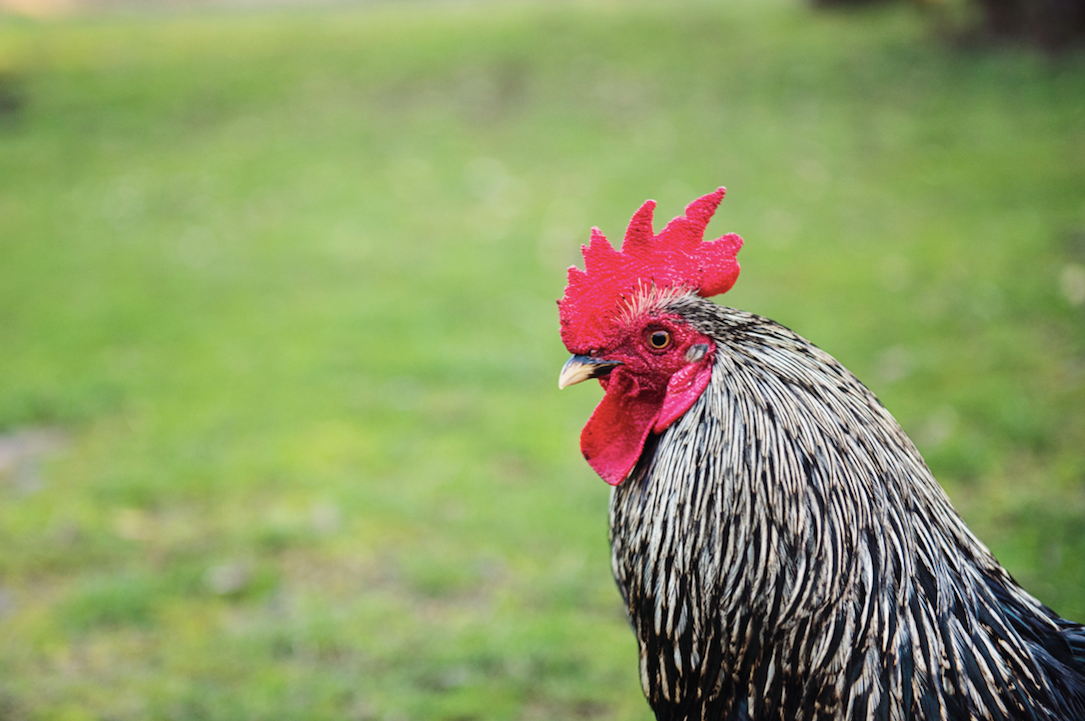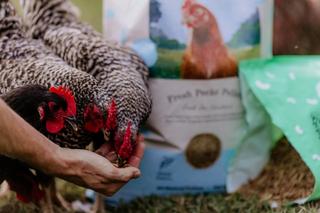Keep Your Rooster from Harassing Your Hens


The rooster struts around the coop and yard like he owns the place. He’s in charge and should protect the hens. Sometimes, however, roosters can become overly aggressive with hens. Learn how to spot this behavior and keep your hens safe and happy.
Why Roosters Peck Hens
From time to time, you may notice that your rooster pecks the hens on their backs and heads. While it may be concerning to you, the rooster is simply doing his job—pecking is courting behavior. When a rooster pecks a hen in that way, if she is ready to mate, she will squat down to be mounted. During mating, the rooster stands on the hen’s back, holding her neck feathers with his beak and steadying himself with his feet. This activity is known as treading.
Eventually, the rooster may come to have a favorite hen or two in the flock. Those hens may end up with bald patches on their backs. It is not uncommon to see hens with missing feathers on their backs, the tops of their wings, and the backs of their heads.
Severe Aggressiveness
You will definitely be able to tell when a rooster is becoming too aggressive with the hens. If you notice that he is drawing blood or making the hens are distressed, it might be time to take steps to curb the rooster’s aggressiveness. To start, you might want to consider clipping and rounding off the rooster’s spurs.
Also, consider your rooster-to-hen ratio. A good rule of thumb is to have one rooster for every 8 to 12 hens. If you have fewer hens than that, then a rooster might not be a good fit for you.
Coop Adjustments & Flooring
A cramped coop might be a cause of the aggressive behavior in your rooster. If chickens are kept in a coop all day, then the coop should be large enough to accommodate 4 square feet per bird. If chickens are not allowed out during the day, then the birds should have 10 square feet per bird in the coop. Dimming the coop lights may also help, as it tends to reduce the risk of pecking activity.
The flooring in your coop may be another area causing aggressive behavior. Bare, wired, or sandy coop flooring hurts chickens’ sensitive feet. To keep a soft floor area, use straw or wood shavings as bedding, which also satisfies the chickens’ natural nesting instincts.
Dietary Changes
Biting by roosters can also be caused by an inadequate diet. Make sure that your birds’ diet is high in fiber by feeding whole or rolled oats, alfalfa hay and/or alfalfa meal. Allowing chickens to free range feed is best for meeting their dietary needs, including vitamins and minerals. Feeding chicken mash instead of chicken pellets also seems to reduce aggressiveness.
Salt Deficiency
If roosters are deficient in salt, sometimes that will prompt aggressiveness. To correct salt deficiency, add a tablespoon of salt to every gallon of water, but be sure to replace the saltwater with fresh water later in the day. Provide the saltwater to roosters every three days.
Sheer Boredom
Some roosters get more aggressive when they are bored. You can create a playground for your chickens using either hay or straw bales. Hang a cabbage just out of the birds’ reach. Trying to jump at the cabbage will keep your chickens busy and occupied.
Protect Your Hens
You have a few options to protect your hens. You can buy chicken saddles, which are pieces of cloth, generally made from a durable, waterproof canvas, that is strapped to the hen’s back. If you use chicken saddles, be sure to regularly check underneath the saddle for external parasites.
You can also apply pine tar to the injured skin of the hens. The unpleasant taste of the tar keeps the rooster away to prevent further injury while also facilitating gradual healing of the wounds.
Some chicken owners put a baby onesie on the chicken to discourage the rooster or tie a piece of fleece on the chicken’s back.
Pinless peepers are handy little gadgets that attach to a rooster’s head with prongs that fit inside their nostrils. The pinless peeper prevents the rooster from seeing what is in front of it, and he cannot peck what he cannot see. The rooster can still see to the side, and the pinless peeper does not interfere with eating or drinking.
While pecking is normal behavior by roosters, you can take steps to stop your rooster from injuring the hens with too much aggression. For more information on raising chickens, subscribe to Chicken Whisperer Magazine.
Tags:Chicken Scratch

Chicken Whisperer is part of the Catalyst Communications Network publication family.












